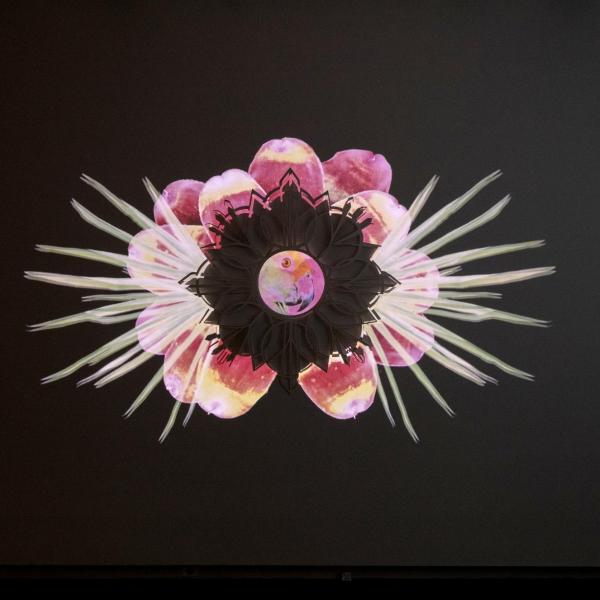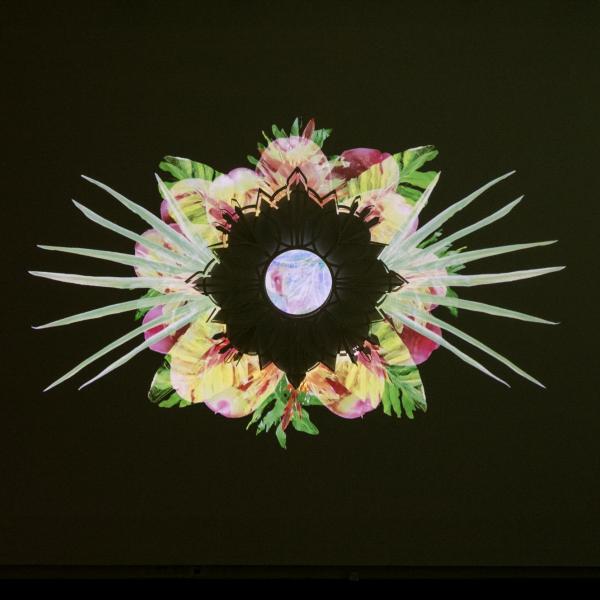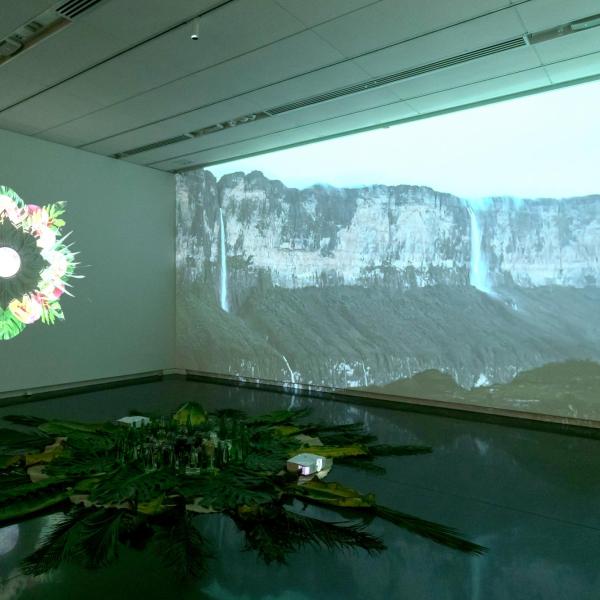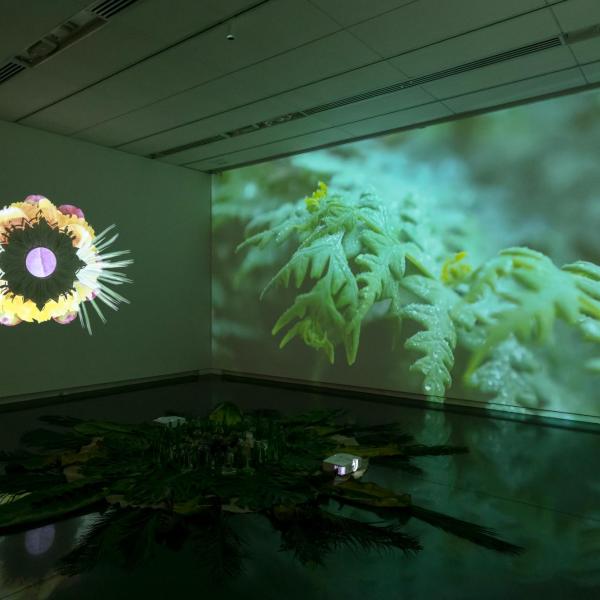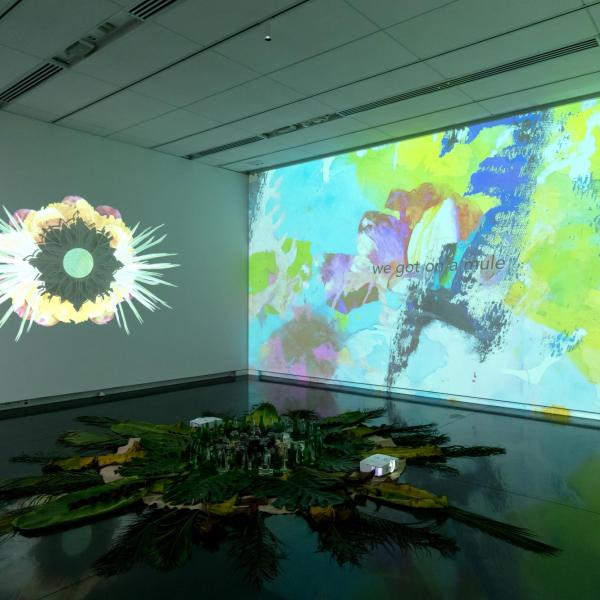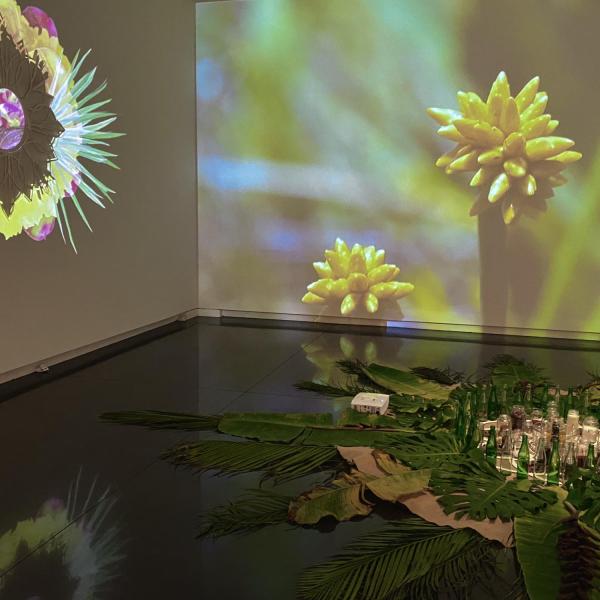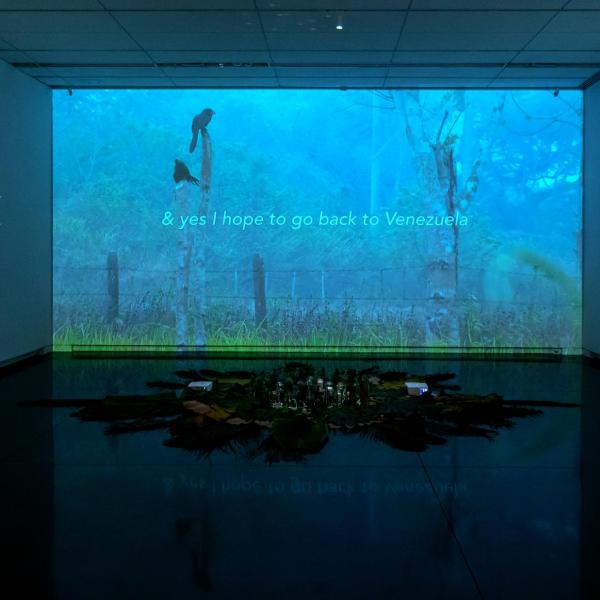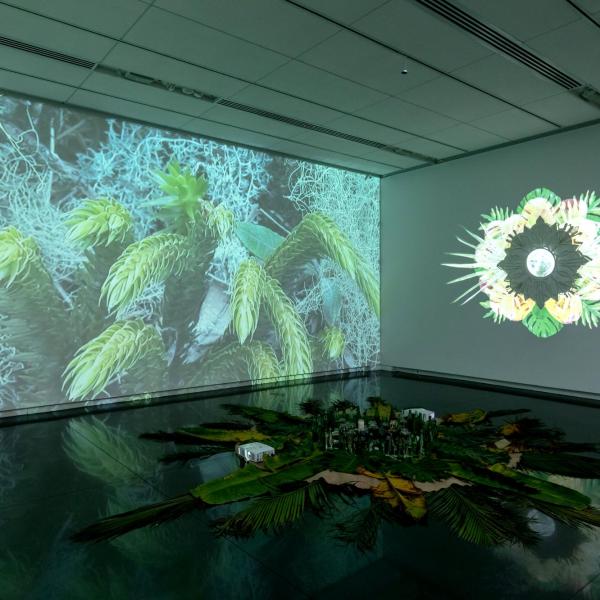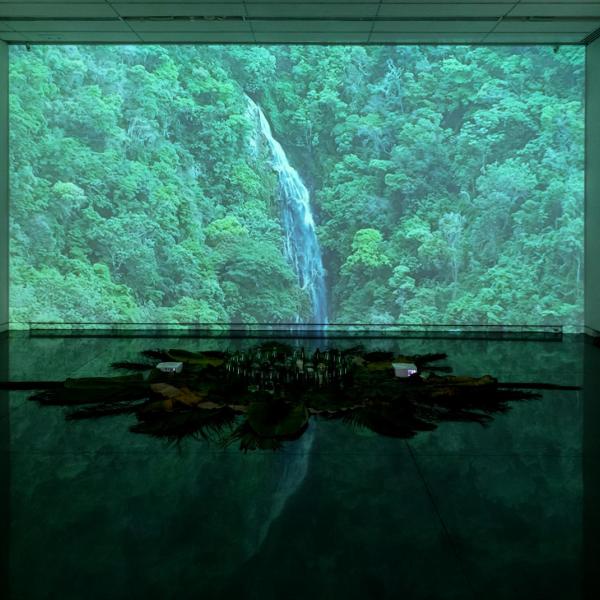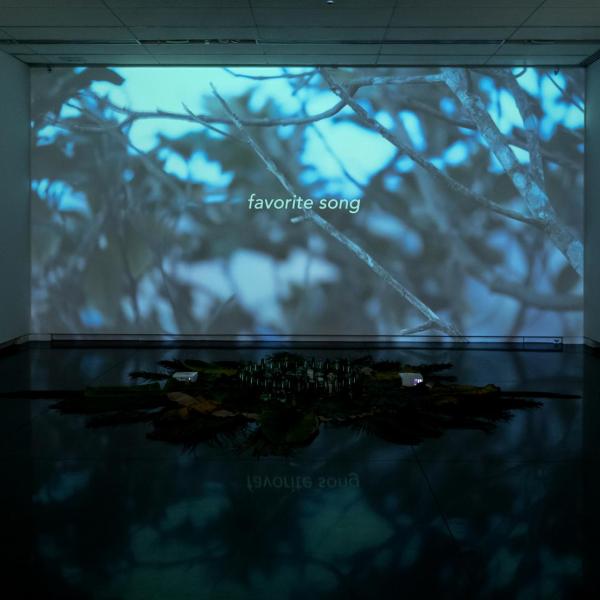Alejandra Abad
Master of Fine Arts
Virtual Thesis Exhibition, University of Colorado Boulder, Spring 2021
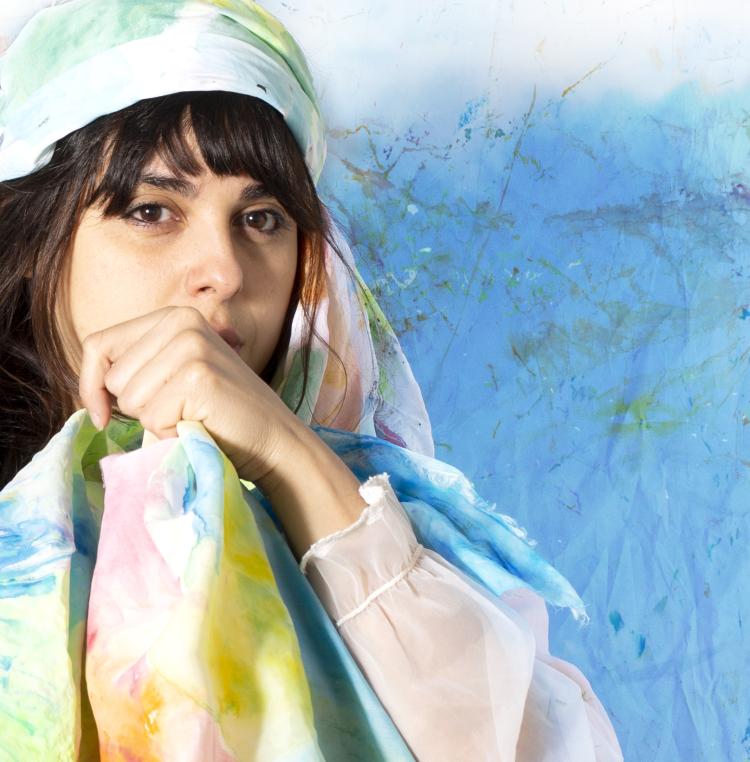
Her thesis show, titled “Un País Olvidado: Reliquias de Vigencia — Forgotten Country: Relics of Agency,” will be open to the public at Arbor Institute from May 27 until the summer solstice.
Exhibition dates: May 27 – June 20
Opening Reception : May 27th 5-8pm
This summer she will have a solo show at Pompano Cultural Center in Florida, curated by Juliana Forero. Starting in September she will be part of an art residency at Platte Forum as well as with Anythink libraries in Colorado, and in October she will be a featured artist at the Denver Art Museum for their Untitled event.
Interdisciplinary Media Arts Practices
Alejandra Abad was born in Venezuela and partially raised in Florida. Her style is informed by architectural studies at FAU and in Film, Video, and New Media at SAIC. She experiments with multimedia, site-specific installations, and handmade materials while examining access, borders, and boundaries. She refers to memories of her upbringing while visually depicting transformations that come with migration and hybrid identity. She creates honest and symbolic narratives connected to place, family, and community. Her animations and moving images often feature fragmentation, folklore, and mythology. By mixing personal experience with socio-political critiques, whether it is tied to her homeland or new homes, her work aims to promote wellness, community, equity, and empathy.
Her content has historic roots in anticolonial movements tied to international surrealism and magical realism, particularly from South America and the Caribbean. She created Bodies of Water, installed at Museo de las Américas, and Poli Mito, which received a grant from First Generation Film / NoBRoZone (Knight Foundation & Time Warner), and was screened at Borscht Film Festival, the Lyric Cinema in 2019, and Shikata Ga Nai in 2020. She travelled to Colombia to teach and make art with the indigenous community. She was a Nest fellow at the MARBLE/marble Symposium. In 2020-2021, as an Engaged Arts and Humanities Graduate Student Scholar, she received grants to fund unidos.club for projects for BMoCA, the Art District of Santa Fe, and Denver’s Clock Tower. She has also recently exhibited in the Co-Terminous and Object Empathy shows at Union Hall.
IG handle: alejandraabad__
Website: https://alejandraabad.com/
Thesis Statement:
My thesis work places both the shared and unique experiences of Venezuelan migrants into mythological structures that speak to present hybrid identities and testimonies of what makes up our Venezuelan identity. These non-linear animations are tied together by a triad of projections that depict mythological creatures born from the trauma, memories, and nostalgia that have resulted from being forced to leave one's country in search of a better life. Immigrant identity is a hybrid identity; this hybridity in turn deconstructs the common “insider vs. outsider” binary.
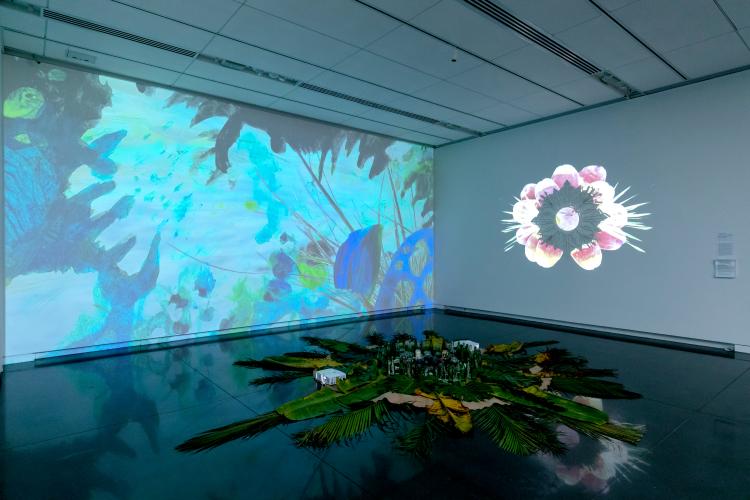
These animated vignettes - composed with Venezuelan objects, appropriated footage, imported goods, food, and stories - exist in a magical realist visual landscape, weaving real stories and fiction together to embody collective memories about immigrant survival. Segments of the video present an original mythology centered on the Venezuelan exodus, mixed with origin stories and other myths from our collective roots; this mythology also critiques the neocolonial system of developed countries exploiting South America. The videos connect with the creation of new relics, which elevate and reinterpret positive symbols from Venezuelan culture (in contrast with the current political-economic crisis in Venezuela). The work aims to connect pedagogy, national identity, and environmental damage of capitalism to the land, its fauna, flora, and people, while also exploring the gained hybrid identities that we can share with other fellow immigrants in this new land.
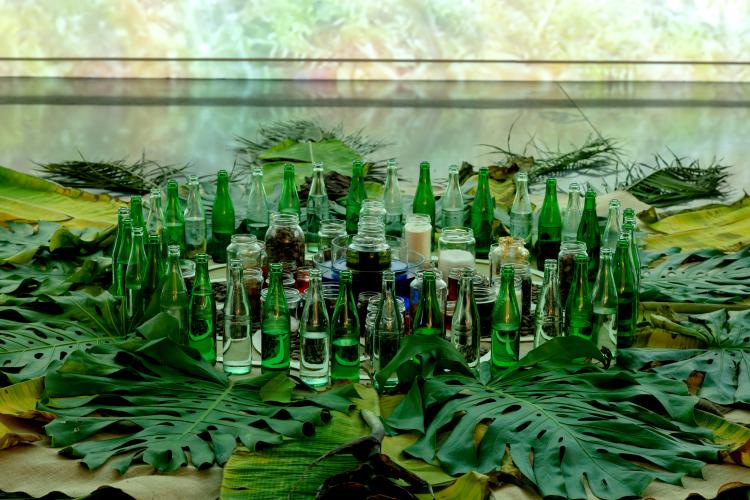
Un País Olvidado: Reliquias de Vigencia (Forgotten Country: Relics of Agency), 2021. Projected videos, paper relics, sculptural centerpiece.
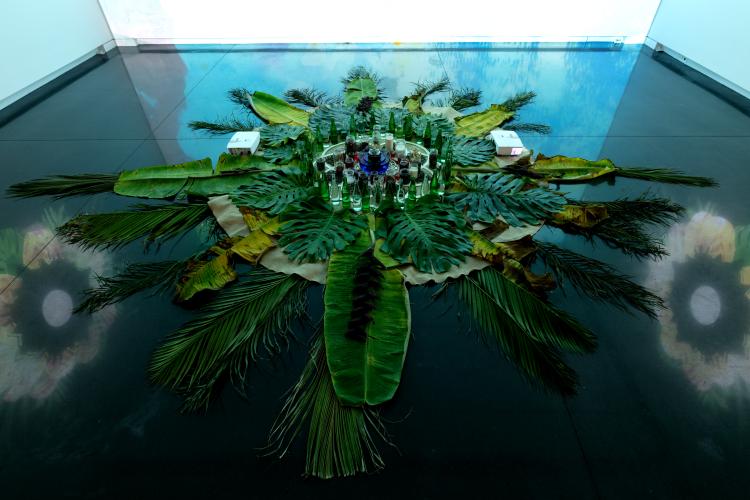
Arranged jars from food I have consumed:
- Smallest jar filled with black dye represents petroleum; it is nested in a corn oil jar.
- Corn oil jar. In 2020, Mexico traded corn oil for millions of Venezuelan petroleum.
- Blue food dye in a container of water represents the Maracaibo Basin (known as Lago Maracaibo), which is the largest body of water in South America, the second most ancient lake on earth, and an inlet to the Caribbean Sea.
- Smaller containers with red dye represent bloodshed. Venezuela had the longest and most violent independence in South America, which eventually left the country in chaos. Caudillos and a series of dictators took over this petrostate where foreign powers controlled the little jefes.
- Mirrors represent the energy crisis with the power outages at the Guri Dam. The reservoir at Guri provides hydroelectric power to Venezuelans situated in the Caroní River, Bolívar State.
- Seeds represent hope.
- Corn flour, rice, salt, water, onoto seeds. These are the ingredients needed to make arepas, and hallacas; these indigenous food traditions continue in spite of colonization.
- Gold, Rocks. Reference the extraction of precious metals by foreign powers.
- Gold leaf. References illegal miners who destroy the ecosystem and harm biodiversity.
- Sugar cane. Represents the economic crisis; in 2020, producers urged tax imports.
- Banana, Coconut, Areca Palm, Heliconia, Uña de danta, Mango Leaves. Imported from Florida, my second home - as it is to many other Caribbean & South American immigrants who were searching for a better life.
- Venezuelan Cocoa Beans (imported from Canada).
- Coffee. I once lived in El Cafetal, it was a coffee plantation where el Ávila surrounds Caracas.


